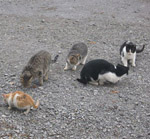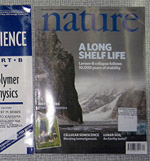When an invasive species becomes media hype
 Purple-loosestrife as the dominant plant in wetland landscapes has raised alarm among scientists and the press.
Purple-loosestrife as the dominant plant in wetland landscapes has raised alarm among scientists and the press.
As we spend huge sums of money each year to combat the negative impacts of invasive species, it becomes important to consider whether we have our priorities in order.
An article by Claude Lavoie argues that researchers and newspapers have created undeserved negative hype for the invasive plant purple-loosestrife (Lycrum salicaria). This in turn is fostering a misplaced sense of priority for controlling the weed.
The controversial paper by Lavoie, published in the journal Biological Invasions highlights the problems that can arise when hype about a conservation problem outgrows the underlying science.
Native to Europe and Asia, purple-loosestrife was first introduced to North America in the early 1800s. To the untrained eye, the sprawling stands of flowering purple-loosestrife blanketing a North American wetland can look stunningly beautiful.
To many ecologists and resource managers, the perennial plant is a horrible menace that crowds out native vegetation forming monoculture stands that degrade habitat for wildlife. Today purple-loosestrife is widely considered one of the worst invasive plants in North American wetlands. A number of states have laws prohibiting the plant. Widescale eradication efforts have been implemented using herbicides and biological control methods using insects such as leaf beetles.
But Lavoie argues that purple-loosestrife has gotten a bad rap by overzealous researchers and journalists doing sloppy work. He conducted a comprehensive review of past research on the weed. He found that a number of studies have found negative impacts from the plant on native wetland vegetation and some species, particularly the American toad (Bufo americanus) and Marsh wren (Cistothorus palustris). However, a number of other studies have found either no impacts on plant diversity or even benefits for certain species such as the Swamp sparrow (Melospiza georgiana).
Meanwhile the press has painted an exaggerated story of purple-loosestrife causing severe habitat decline. Lavoie reviewed 902 articles about purple-loosestrife from 1982 through 2008. Common descriptions attributed to the plant were Invader, Menace, Plague, Killer, Scourge, and Monster. The press commonly exaggerated the negative impacts compared to what science has established. Lavoie blames the public misperception largely on a few researchers who have emphasized the negative impacts of purple-loosestrife without solid scientific support.
The issue of purple-loosetrife goes beyond the academic debate about a particular plant. Massive resources are put into invasive weed control efforts across the world. If certain invasive species are more or less harmful than others, we need to find this out so that we can put our limited conservation resources into the most pressing problems.
In terms of purple-loosestrife, Lavoie writes:
"if purple-loosestrife is not a primary cause of extinction or a major contributor to the decline of other species, but is instead an indicator of anthropogenic disturbances, the resources and efforts devoted to removing this species might be better focused on more effective means to protect wetlands against disturbances. Raising this issue can only help biological invasion specialists do better science."
--Reviewed by Rob Goldstein
Lavoie, C. (2009). Should we care about purple loosestrife? The history of an invasive plant in North America Biological Invasions DOI: 10.1007/s10530-009-9600-7




 Invasive
Invasive
Reader Comments